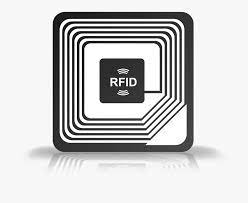
In today's fast-paced world, where convenience and security are paramount, Radio-frequency identification (RFID) cards have emerged as an indispensable technology. These unassuming cards have quietly transformed the way we interact with the physical and digital realms. In this blog post, we'll delve into the fascinating world of RFID cards, exploring their technology, applications, and the myriad benefits they bring to our lives.
Understanding RFID Cards
RFID cards, short for Radio-frequency identification cards, are smart cards equipped with tiny embedded RFID chips and antennas. These chips communicate with RFID readers via radio waves, enabling data exchange without physical contact. This wireless communication process is at the heart of what makes RFID cards so versatile and powerful.
How Do RFID Cards Work?
The magic of RFID cards happens through a simple yet sophisticated process:
RFID Chip: The RFID card contains a microchip with data storage capacity. This chip can be preloaded with information, such as identification details, access permissions, or financial data.
Antenna: Surrounding the chip is a tiny antenna. This antenna captures radio waves emitted by RFID readers and powers the chip.
RFID Reader: An RFID reader sends out radio waves, creating an electromagnetic field around it. When an RFID card enters this field, its antenna absorbs energy from the reader, which activates the chip.
Data Exchange: Once activated, the RFID chip sends the stored data back to the reader through radio waves. The reader interprets this data and takes appropriate action, such as granting access, recording inventory, or processing a payment.
Applications of RFID Cards
Access Control: RFID cards are widely used for secure access control in buildings, offices, and gated communities. Presenting the card to a reader allows authorized personnel to enter.
Inventory Management: Businesses use RFID cards and tags to track inventory and assets efficiently. This technology streamlines stock management and reduces errors.
Payment Systems: Contactless payment cards equipped with RFID technology have revolutionized the way we pay for goods and services. A simple tap can complete a transaction.
Transportation: RFID cards power many modern transit systems. Commuters use them to access buses, subways, and trains, speeding up boarding processes.
Healthcare: In healthcare, RFID cards help manage patient identification, track medications, and locate medical equipment quickly.
Efficiency: RFID cards simplify tasks, reducing the time and effort needed for access control, payments, and inventory tracking.
Security: These cards often come with encryption and authentication measures, enhancing security and minimizing the risk of unauthorized access.
Speed: Transactions with RFID cards are lightning-fast, leading to shorter queues and improved customer satisfaction.
Accuracy: Automation and reduced manual input result in fewer errors, which is critical in fields like inventory management and healthcare.
Cost Savings: Improved efficiency and reduced errors translate into significant cost savings for businesses.
Conclusion
RFID cards have quietly ushered in an era of convenience and efficiency. From streamlining daily operations to enhancing security, these unassuming cards have found their way into nearly every facet of our lives. As technology continues to evolve, we can only imagine the exciting innovations that will further expand the capabilities of RFID cards. Stay tuned for a future where these small wonders continue to shape our world.